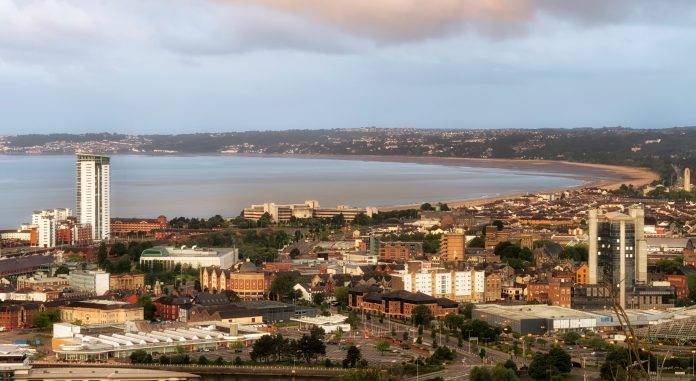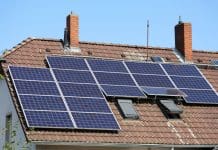New plans for a tidal lagoon and floating modular homes as part of a renewable energy development in Swansea Bay are financially viable, according to an independent report
The tidal lagoon would form part of a new Dragon Energy island off the Swansea coast which could create thousands of jobs.
The new proposals include a floating modular homes development, underwater data centre, solar farm and the production of pure hydrogen and pure oxygen on site for storage or sale.
Giant underwater turbines would also feature as part of the proposed Dragon Energy Island, helping to power thousands of homes across Swansea and beyond.
The potential for a public procurement arrangement has also been proposed, which could see councils and other public sector organisations buying electricity directly from the energy island.
The report says there is potential to make significant savings of up to 30% on the capital costs of the project.
The report by Holistic Capital, a sourcing company, was commissioned by a Swansea Bay City Region task force set up to explore options to deliver the tidal lagoon following the UK Government’s decision not to proceed with previous proposals in June 2018.
Councillor Rob Stewart, Swansea Council Leader and chairman of the City Region’s task force, said: “Despite the UK Government not backing the previous proposals, we never gave up hope on the opportunity to deliver a major renewables project in Swansea Bay.
“An enormous amount of hard work has taken place behind the scenes to develop a new proposal that will generate clean, green power for many generations to come.
“The new proposal is a larger and more ambitious renewable energy development that’s built upon the natural tidal benefits of Swansea Bay and complementary technology to generate zero-carbon power.
“The tidal lagoon is at the heart of the new proposal and gives us the opportunity to create a new floating community of homes and businesses within the sea wall. This has already been successful in countries like Holland, Germany and Denmark, providing a sustainable solution to issues including population density and climate change.
“This project will place Swansea Bay at the forefront of worldwide marine energy innovation, create thousands of jobs, boost local supply chain businesses, and help develop a globally significant export industry in Swansea Bay.
“Importantly, the independent report has found this new proposal to be credible and financially viable with the potential to make savings of up to 30% on previous estimates.
“There’s considerable interest from major companies in turning this opportunity into a commercial reality, so we’re now keen to move forward.”
The Dragon Energy Island would be based on the footprint of the former lagoon proposal and would generate a combination of marine, solar and hydrogen energy.
The report is due to be considered by the Swansea Bay City Region’s Joint Committee before next steps are explored.
Construction could start in 2021, with the Dragon Energy Island potentially operational by the end of 2026.
Councillor Stewart added: “The Dragon Energy Island proposal meets all the needs of the Well-being of Future Generations Act, while also closely aligning to the Homes as Power Stations project due to be part-funded by the £1.3bn Swansea Bay City Deal.
“It will greatly reduce our carbon footprint and has the potential to benefit residents and businesses across Swansea and other parts of the City Region for over 120 years.
“Given the encouraging findings of the Holistic Capital report and the continued strength of support throughout South Wales and beyond for a project of this kind, we’re now more determined than ever to deliver.”















All of those involved in this project and particularly those planning to part with their money, ignore burgeoning developments in advanced nuclear power plants at their peril. So, Swansea’s rate-payers – check if some of your council taxes are going into this scheme.
The BWRX-300 SMR has a COD of 2028, so by the early/mid 2030s, this 300 MW SMR will be available at a cost of £452 billion – under 1/4 of the cost per MW of Hinkley and competitive to gas.
With a design life of 60 years, a second build would be necessary to generate for the 120 year lifespan of this tidal scheme – that would cost £904 million – making both investment costs just about identical.
But the BWRX-300 would generate 24/7 electricity, whereas a tidal scheme’s intermittent electricity requires CCGT backup. Much more importantly though, over 120 years, the two builds of BWRX-300s will generate over 4X more electricity, from a site the size of 2 football pitches.
And the reason the cost per unit of electricity generated is 4X higher for the tidal scheme, is very simple – over 4X more materials and fossil-fuelled energy will be used, in mining, quarrying, transport and construction. And then there’s 1000X more scenic degredation, ecosystem destruction and species wipe-out that should concern true environmentalists.
‘Free energy’ from Mother Nature is a tragic delusion.